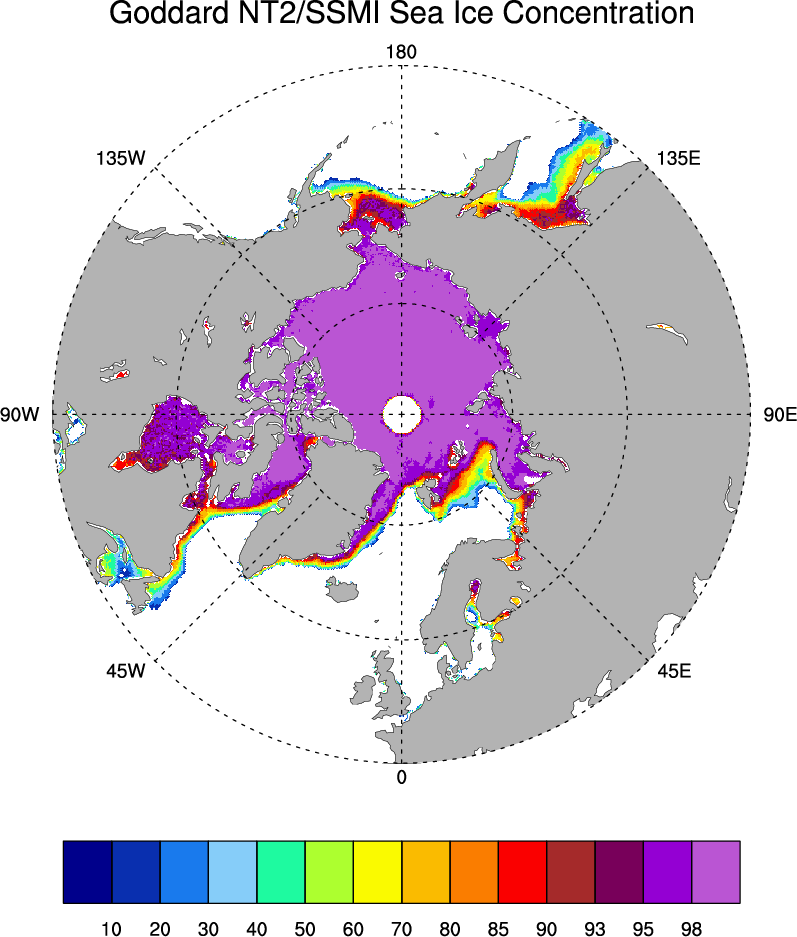Sea ice concentration data from NASA Goddard based on SSMI and NASA Team (NT2) algorithm

Key Strengths
Key Limitations
Cite this page
Acknowledgement of any material taken from or knowledge gained from this page is appreciated:
National Center for Atmospheric Research Staff (Eds). Last modified "The Climate Data Guide: Sea ice concentration data from NASA Goddard based on SSMI and NASA Team (NT2) algorithm.” Retrieved from https://climatedataguide.ucar.edu/climate-data/sea-ice-concentration-data-nasa-goddard-based-ssmi-and-nasa-team-nt2-algorithm on 2025-12-21.
Citation of datasets is separate and should be done according to the data providers' instructions. If known to us, data citation instructions are given in the Data Access section, above.
Acknowledgement of the Climate Data Guide project is also appreciated:
Schneider, D. P., C. Deser, J. Fasullo, and K. E. Trenberth, 2013: Climate Data Guide Spurs Discovery and Understanding. Eos Trans. AGU, 94, 121–122, https://doi.org/10.1002/2013eo130001
